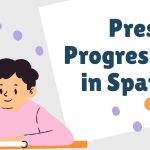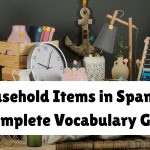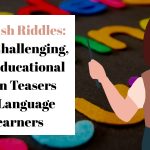Mexico is rich with traditions that go back hundreds of years, showing the country’s complex history and various influences. From the quiet reflections during Holy Week to the colorful festivities of the Day of the Dead, these traditions tell us a lot about what Mexicans value and believe in.
They keep the culture alive amid modern changes and help bring people together, strengthening community ties. Let’s dive deeper into these traditions to see how they keep Mexico’s cultural spirit strong and vibrant.
Mexican traditions recognized by UNESCO
In Mexico, community and culture are key. UNESCO has recognized some Mexican traditions for their cultural importance.
This includes the Voladores de Papantla, a ritual where performers fly around a pole, the lively music and dance of Mariachi, and the traditional ways of making Tequila.
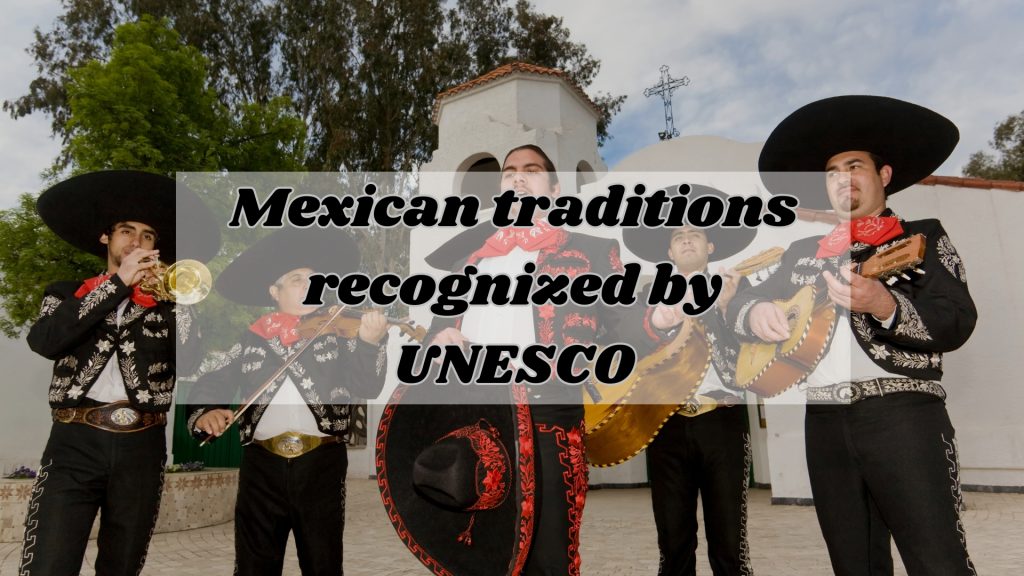
These practices are vital pieces of Mexico’s cultural heritage.
| Tradition | Description |
|---|---|
| Day of the Dead | A vibrant celebration honoring deceased loved ones with altars, marigolds, and offerings. |
| Mariachi Music | A lively musical tradition featuring guitars, trumpets, and folk songs. |
| Traditional Mexican Cuisine | A culinary heritage based on maize, chili, and cacao, recognized for its deep cultural roots. |
Religious Mexican traditions
In Mexico, religion is a big part of life. The country celebrates many religious events like Baptisms, First Communion, and Holy Week.
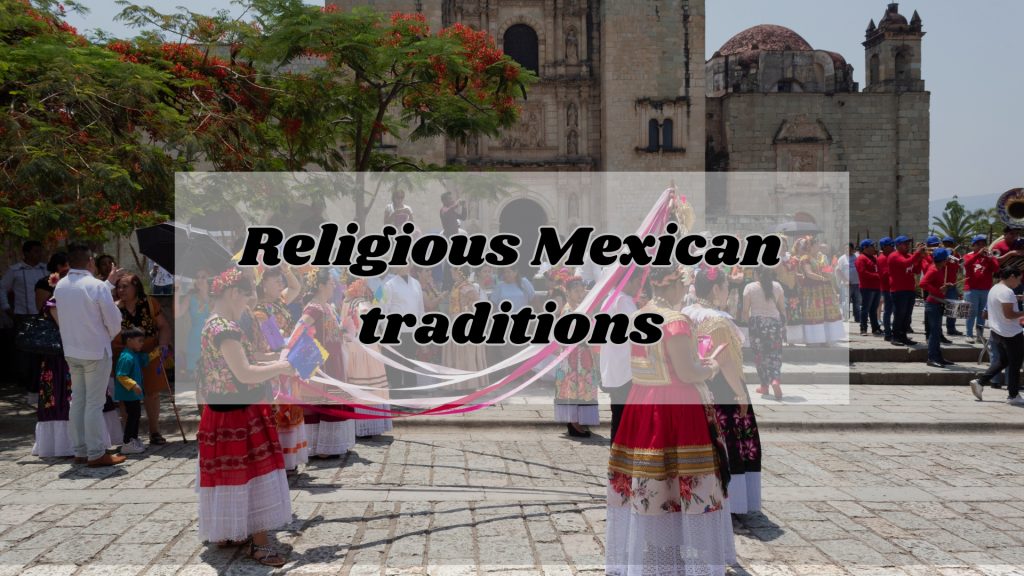
These are times when people come together, taking part in ceremonies and fun activities. It’s a way for communities to show their deep faith and keep their traditions alive, bringing families closer across generations.
| Tradition | Description |
|---|---|
| Feast of Our Lady of Guadalupe | A major Catholic celebration on December 12 honoring Mexico’s patron saint. |
| Holy Week (Semana Santa) | A week of processions and dramatic reenactments of Christ’s Passion. |
| Posadas | A reenactment of Mary and Joseph’s search for shelter, celebrated before Christmas. |
Indigenous Mexican Traditions
Religious beliefs are a big part of Mexican culture, but there’s more to it. The Nahua, Maya, Zapotec, Mixtec, and Purhépecha peoples have their own rich traditions. These groups speak unique languages and hold special ceremonies and gatherings.
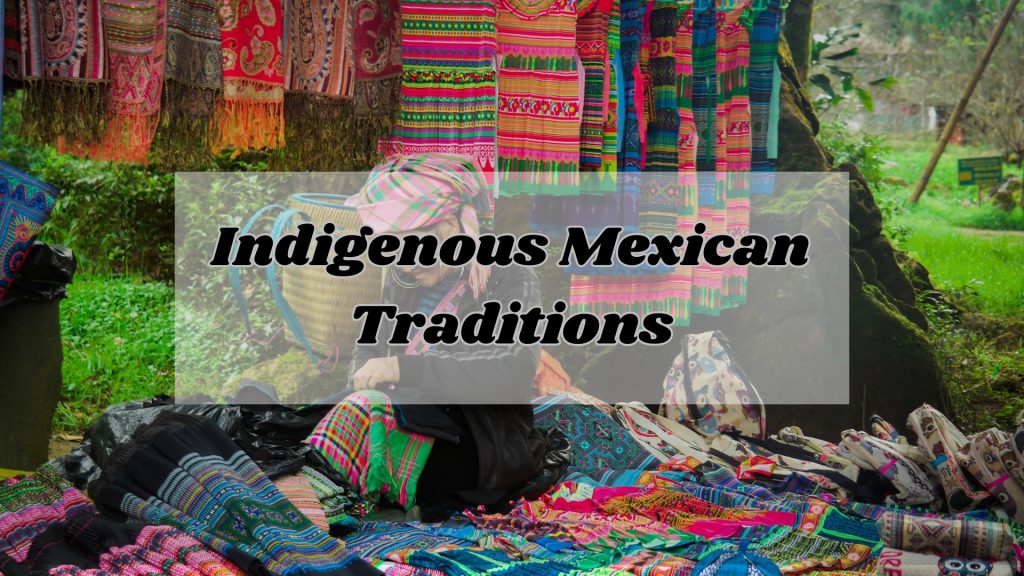
They celebrate their connection to nature, their ancestors, and the universe. This keeps their old knowledge and customs alive, even today.
| Tradition | Description |
|---|---|
| Danza de los Voladores | A ritual where performers descend from a high pole in a ceremonial dance to honor nature. |
| Temazcal | A traditional steam bath used for purification and healing. |
| Indigenous Healing Practices | Herbal medicine, spiritual cleansings, and traditional healing methods passed through generations. |
Expand Your Vocabulary with Spanish Words That Start with E.
Food and Drink in Mexico
Mexican food is simple but full of flavor, with deep roots in history and local traditions. Common dishes are tacos, enchiladas, and tamales. They’re often served with thick mole sauces or fresh salsas. Drinks like tequila, mezcal, and horchata add to the meal.
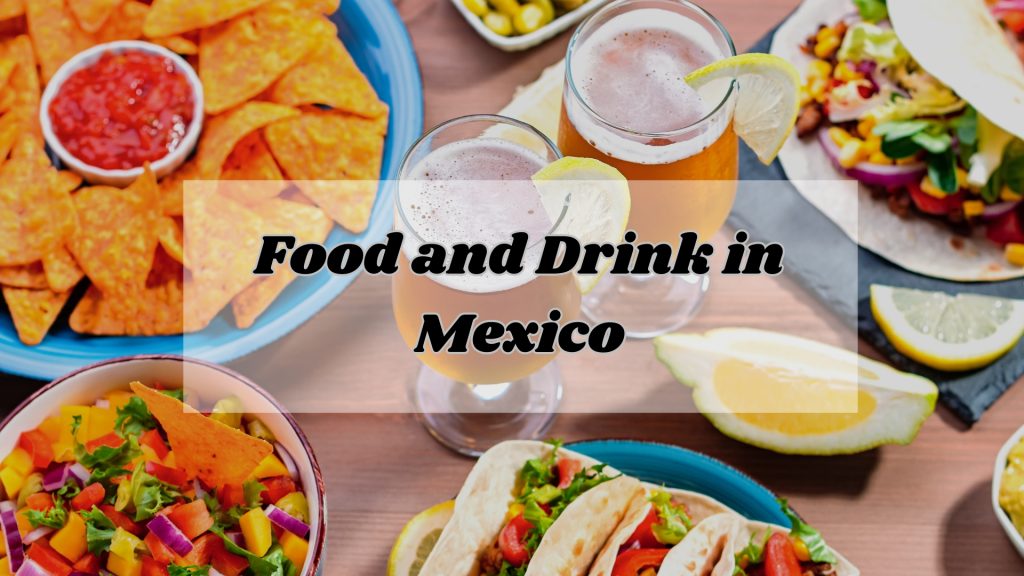
Each part of Mexico has its own special ingredients and ways of cooking, showing the country’s rich variety of foods.
| Food/Drink | Description |
|---|---|
| Tacos | A staple dish made with soft or crispy tortillas filled with various ingredients. |
| Tamales | Corn-based dough filled with meats, cheeses, or chilies, wrapped in husks and steamed. |
| Mezcal | A distilled alcoholic beverage made from the agave plant, known for its smoky flavor. |
Family and life cycle traditions in Mexico
In Mexico, family traditions celebrate life’s big moments from birth to becoming an adult. People gather happily when a baby is born. Birthdays are special too, with quinceañeras being especially significant. They mark a girl’s transition to womanhood.
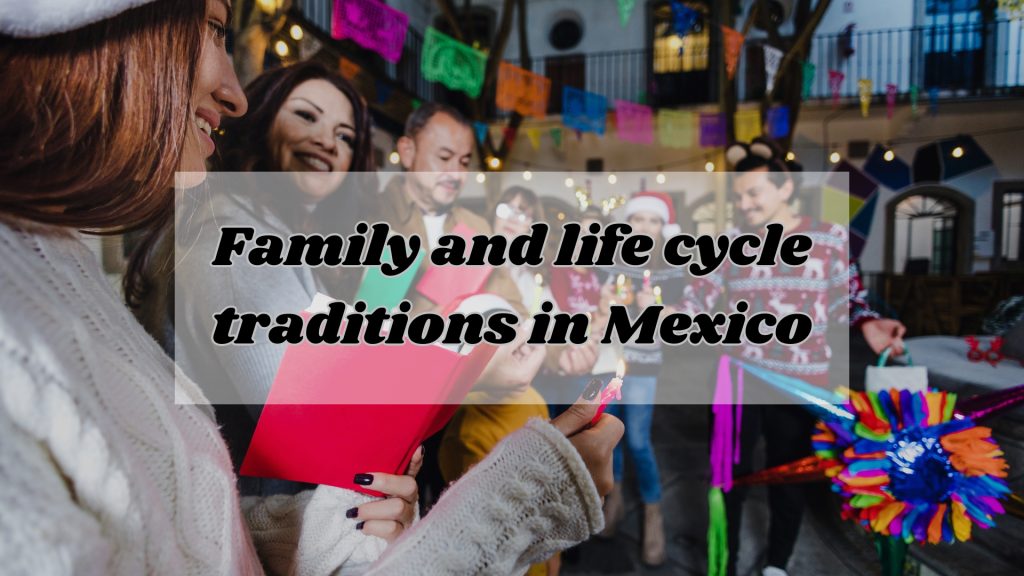
Weddings blend old and new traditions and often last all night. These celebrations focus on family togetherness and cultural pride.
| Tradition | Description |
|---|---|
| Quinceañera | A grand celebration marking a girl’s 15th birthday, symbolizing her transition to adulthood. |
| Wedding Rituals (Lazo) | A symbolic rope tied around the couple during the wedding ceremony, signifying unity. |
| Día de los Abuelos | A day dedicated to honoring grandparents with family gatherings and celebrations. |
Mexican traditional arts and crafts
In Mexico, traditional arts and crafts are really important for cultural expression. Think about colorful textiles, beautiful pottery, and detailed silverwork. Talavera tiles and Oaxacan wood carvings, also called alebrijes, are true works of art.
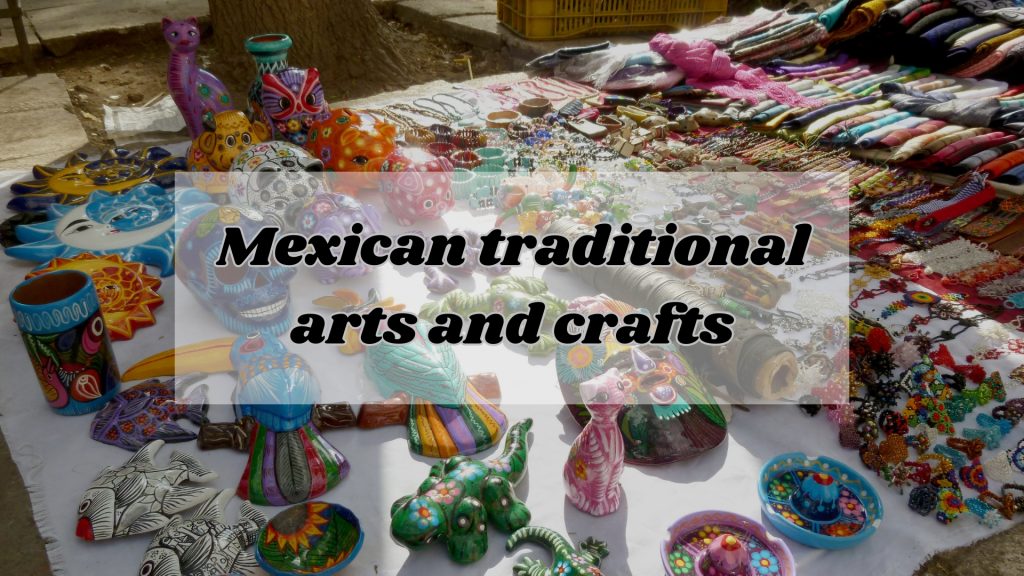
Each piece tells a story from the region, mixing old native techniques with styles from colonial times. This not only keeps Mexico’s rich history alive but also helps local communities and their economies.
| Art/Craft | Description |
|---|---|
| Alebrijes | Brightly colored, fantastical wooden creatures with intricate patterns. |
| Huichol Beadwork | Intricate beadwork with symbolic designs, created by the Huichol people. |
| Talavera Pottery | Hand-painted ceramic pottery with Spanish and indigenous influences. |
Mexican festivals and celebrations
Throughout the year, Mexico is alive with colors and sounds, thanks to its many festivals and celebrations. Some key events include Día de los Muertos, where people build altars and make skull decorations to remember their ancestors.
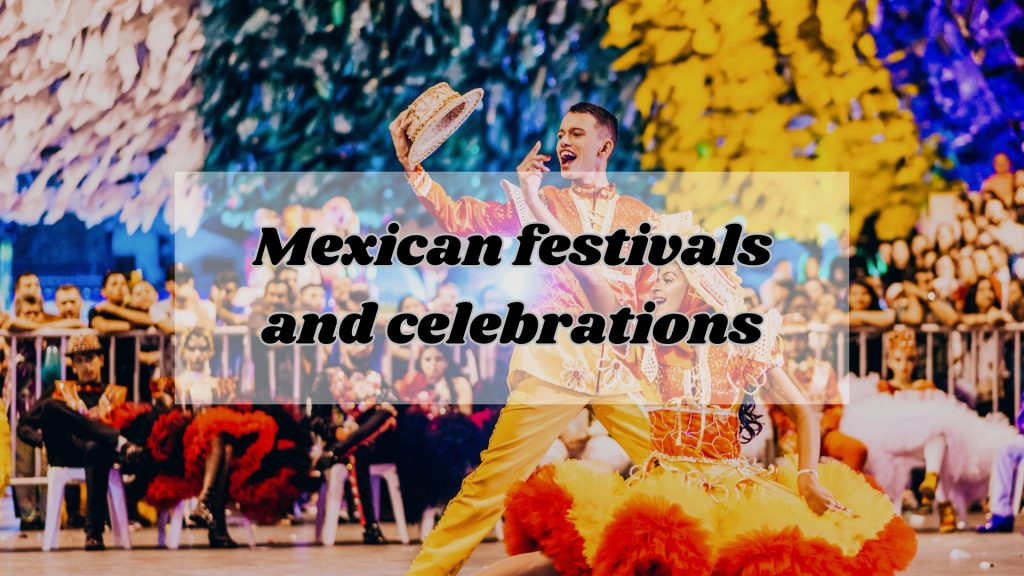
Then there’s the Guelaguetza, which showcases the rich culture of Oaxaca. On Independence Day, everyone enjoys parades and fireworks. Each festival is deeply connected to the country’s diverse traditions and shows the unique cultural mix of Mexico.
| Festival | Description |
|---|---|
| Guelaguetza | A festival in Oaxaca showcasing indigenous dance, music, and traditions. |
| Carnaval | A lively pre-Lenten festival featuring parades, costumes, and dancing. |
| Las Fiestas Patrias | A national celebration of Mexican independence, featuring El Grito on September 15. |
Music and dance traditions of Mexico
Music and dance are central to Mexico’s rich culture. Mariachi music is famous, featuring trumpets and violins, and is a staple at many festive events.
The Jarabe Tapatío, also known as the Mexican Hat Dance, is a folk dance that tells regional stories through precise movements and vibrant costumes.
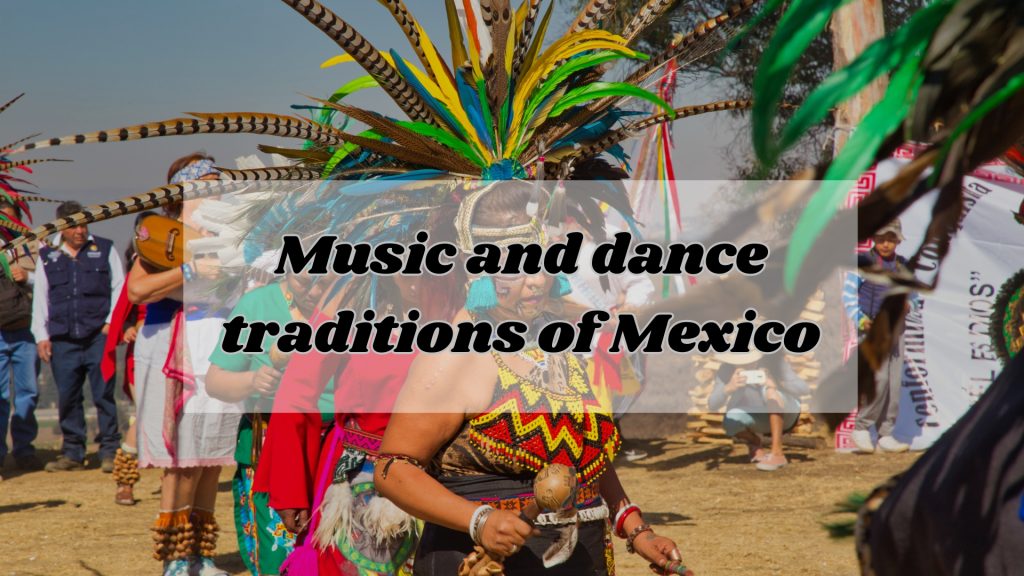
These traditions bring people together, celebrating their shared heritage in a lively and colorful way.
| Music/Dance | Description |
|---|---|
| Mariachi | A traditional Mexican music genre with lively performances and storytelling songs. |
| Jarabe Tapatío | The Mexican Hat Dance, a spirited courtship dance full of energy and pride. |
| Danza de los Diablos | A ritual dance performed in honor of ancient spirits, particularly in Afro-Mexican communities. |
Learn 35+ Salvadoran Slang Terms for Authentic Conversations.
Mexican traditions for Christmas
Mexican Christmas traditions are rooted in the country’s strong Catholic background and feature many unique and joyful customs. The celebrations kick off with Las Posadas, which reenacts Mary and Joseph’s quest for a place to stay. Families come together for Nochebuena, where they enjoy a big meal and attend midnight Mass.
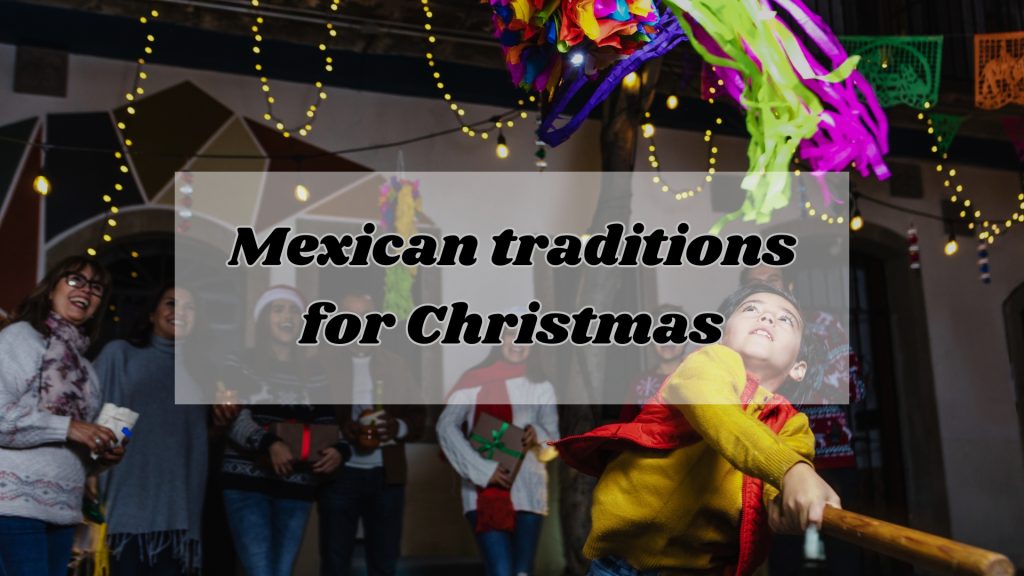
Kids have a blast breaking piñatas filled with treats. The festivities wrap up with Día de Reyes, when children get gifts and everyone shares a special cake called Rosca de Reyes.
| Tradition | Description |
|---|---|
| Las Posadas | A reenactment of Mary and Joseph’s journey for shelter, celebrated from December 16-24. |
| Piñatas | Colorful papier-mâché figures filled with treats, broken during Christmas festivities. |
| Día de los Reyes | The celebration of Three Kings’ Day, where children receive gifts and share Rosca de Reyes. |
Conclusion
To put it simply, Mexican traditions are a rich mix of old and new. They draw from ancient indigenous customs and newer religious and festive celebrations. These traditions aren’t just about history; they’re alive, shaping community ties, spiritual life, and the vibrant spirit of Mexican people today.
From festivals recognized by UNESCO to unique foods, these customs are key to Mexico’s cultural identity and continue to grow and evolve with each generation.
Explore Fun and Interactive Language Learning with Lingua Viva.
Born in Cali, but raised in London, Juan Pablo has led an interesting life. He has an undergraduate degree in Foreign Language and 10+ years of experience. Juan Pablo has taught and worked as a professor and interpreter in Spanish, English, and French languages. He prides himself on having a ‘situational teaching style’, which means he caters lessons to fit student needs. He is serious about teaching, responsible, professional, clear, and concise.


